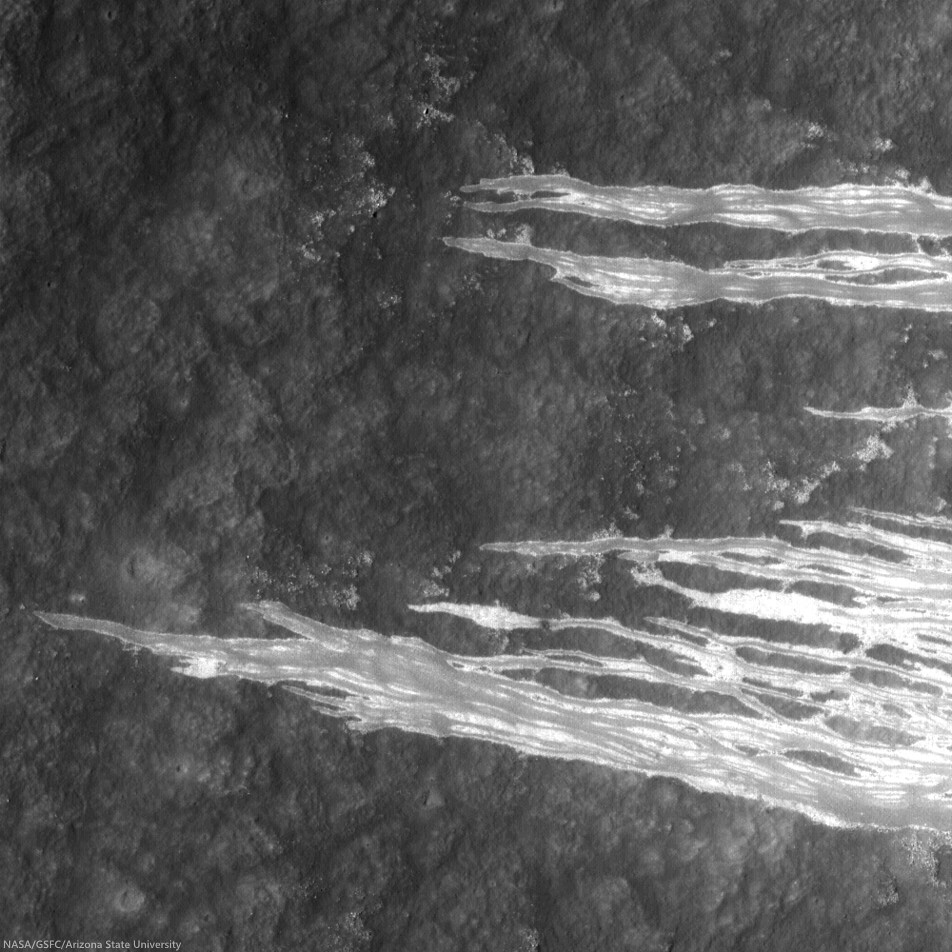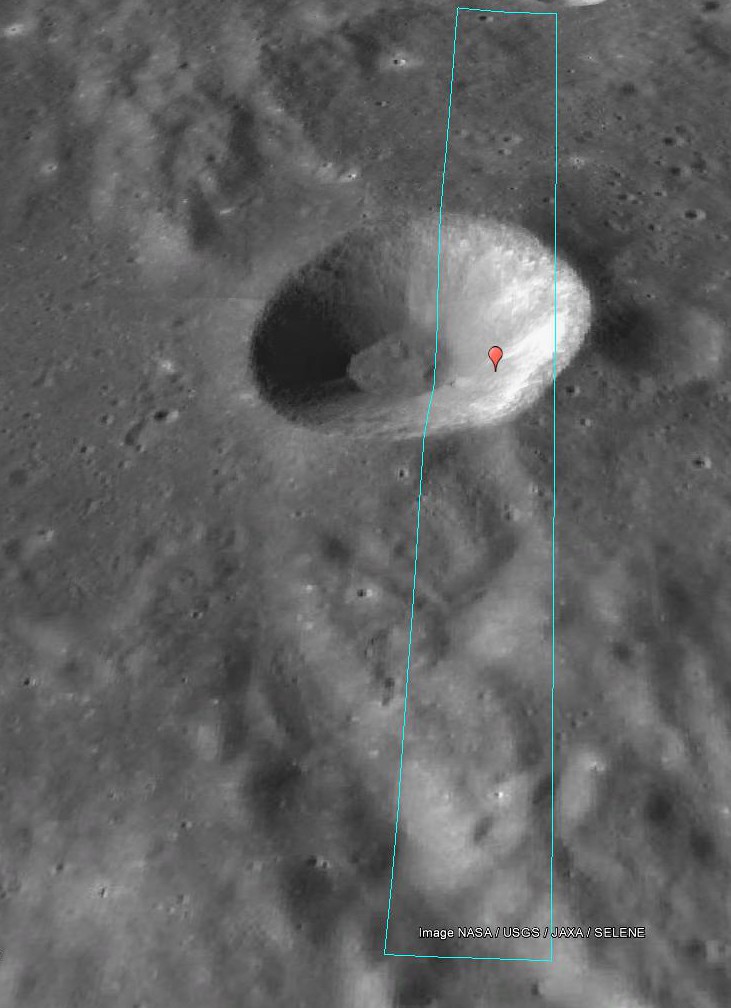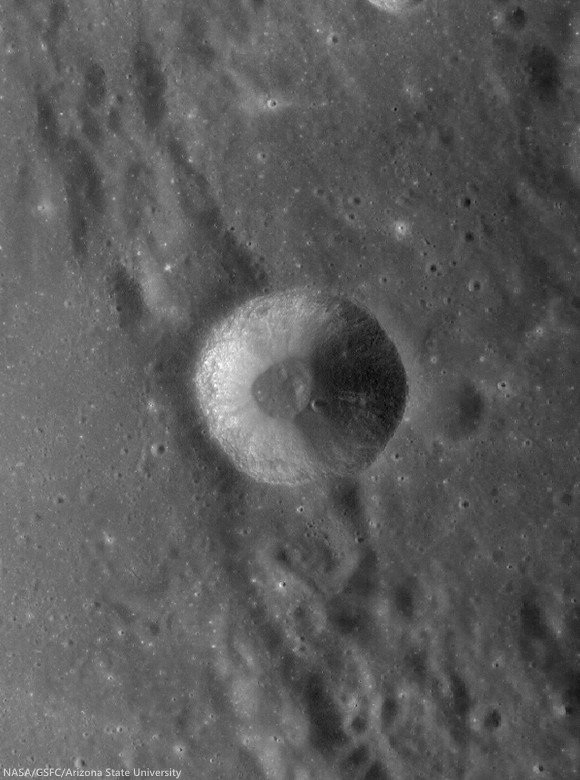 |
| Beautiful granular flows on the steep eastern wall of Hipparchus G crater (13.68 km; 5.03°S, 7.4°E) brought fresh debris from the rim down downslope to the left. Field of view about 1 km from LROC NAC observation M183474839L, LRO orbit 12135, February 10, 2010; 38.77° incidence angle, resolution 1.02 meters from 100.52 km [NASA/GSFC/Arizona State University]. |
LROC News System
Hipparchus G (13.68 km; 5.03°S, 7.4°E) is a high reflectance crater formed on the rim of the much older and degraded Hipparchus crater, in the nearside Southern Highlands.
While these streamers may look like mudslides, they are actually dry solids that underwent fluidized flow; these features are called debris flows and are seen in many craters on the Moon.
While these streamers may look like mudslides, they are actually dry solids that underwent fluidized flow; these features are called debris flows and are seen in many craters on the Moon.
Why do these flows look like tendrils? As the debris was flowing downhill, in some places it encountered obstacles, such as a rougher surface or large boulders. If the flow had enough energy it found its way around the obstacle, as seen by the curved path taken by these streams, if the obstacle was too large and the debris was too thin, it came to a halt.
Related Posts:




No comments:
Post a Comment